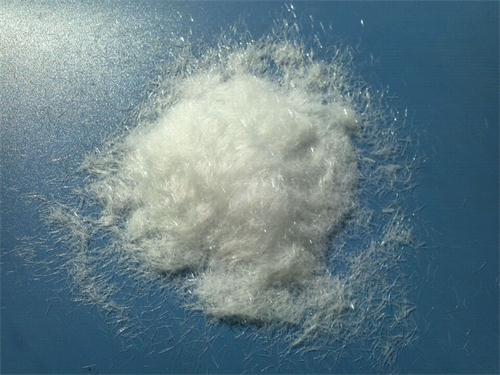Polypropylene fibers are also known as "polypropylene fibers". In addition to being widely used in textile industry, polypropylene fibers are popular in construction industry because of their anti-ultraviolet, anti-aging, strong alkali resistance, high modulus of elasticity, high tensile strength and good chemical stability. So many people will question what is the difference between polypropylene fibers and expanders. Today we will take a look at this topic.
Polypropylene fibers: When polypropylene fibers are added into concrete, the impermeability of concrete is improved because the transmission mechanism of different media in different apertures is different. The permeation of pressure water after water filling due to capillarity conforms to that of the medium with the western path, which is migrated by one molecule or ion, i.e. due to the diffusion of adsorption.
Expansion agent: The vast majority of expansive agents at home and abroad are calcium sulphoaluminate type, which generally replaces cementitious materials with 8%-12% of the same amount. The expansion agent reacts with cement hydration to form ettringite expansion crystallization. Under the restriction of steel bar and adjacent position, 0.2-0.7 MPa pre-compressive stress is established in concrete, which improves the stress state of concrete and improves its crack resistance.
It is well known that cement concrete material is the most widely used man-made building material at present, but because concrete is prone to cracks due to brittleness, and the tensile strength of ordinary high-strength concrete is lower than the compressive strength, so brittle damage occurs extremely, which affects the service life of the project, and therefore the production of polypropylene fibers.

Function of polypropylene fibers:
1. Improving toughness: Polypropylene fiber can greatly improve the toughness of concrete, and improving the crack resistance and deformation ability is especially important to improve brittleness.
2. Improving impermeability: Polypropylene fibers can effectively inhibit the generation and extension of early dry shrinkage cracks and segregation cracks in concrete or mortar, greatly improve the compactness of concrete or mortar, thereby improving the impermeability of concrete or mortar.
3. Crack resistance: Polypropylene fibers mixed in concrete or mortar to form a uniform chaotic support system can effectively prevent the occurrence and development of primary cracks in concrete mortar, reduce the number and size of cracks, effectively hinder the segregation of aggregate, and ensure uniform drainage to hinder the formation of settlement cracks.
4. Improving frost resistance: adding polypropylene fibers can introduce trace air into concrete, so that free water destroyed by expansion and shrinkage of concrete due to freeze-thaw cycle can enter these micro-bubbles to reduce early freeze-thaw damage; at the same time, it can alleviate the effect of internal stress caused by temperature change and prevent the expansion of temperature cracks.
5. Improving wear resistance and impact resistance: Polypropylene fibers can effectively control the bleeding of concrete mixtures, reduce the segregation of cement particles and sand particles, and improve the bonding performance of highway interface to form a more solid concrete surface. At the same time, it can absorb shock energy, effectively reduce the continuity of crack-reinforced media and reduce the local stress concentration caused by the blocking of shock wave.

